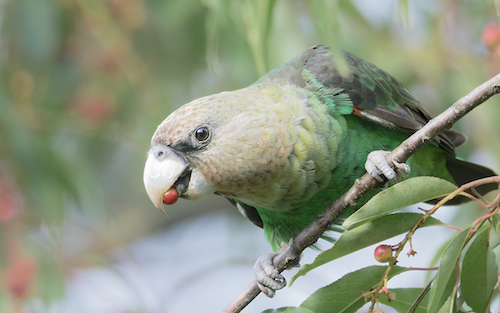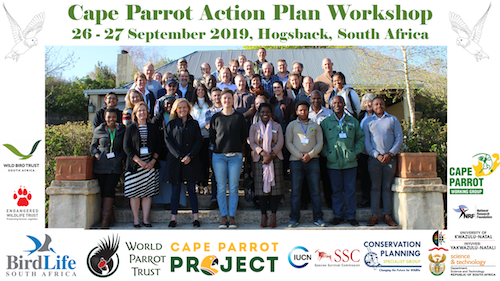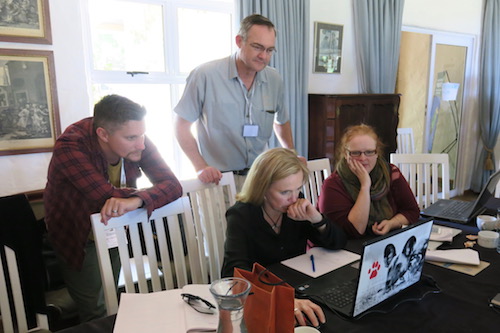The workshop was developed by the World Parrot Trust in partnership with the Cape Parrot Project, Birdlife South Africa and the Cape Parrot Working Group, which worked together as a coordination committee. Representatives of the IUCN SSC Conservation Planning Specialist Group, Kerryn Morrison and Harriet Mostert-Davies (Endangered Wildlife Trust), facilitated the workshop, following IUCN best-practice guidelines for species conservation planning and guiding participants through an objective process to identify issues of concern and priority conservation actions for the species. Kate Carstens and colleagues from the Cape Parrot Project in Hogsback did a phenomenal job of hosting participants, coordinating logistics and ensuring the workshop ran incredibly smoothly. Funding was provided by WPT’s Africa Programme, BirdLife South Africa and the Wild Bird Trust.
The World Parrot Trust joined experts from South Africa and around the world in Hogsback, South Africa 26th-27th September to create a plan to secure the future of Cape parrots. The plan sets the stage for coordinated action to address newly emerging and long-standing threats to these iconic green and gold birds.
Cape parrots are one of Africa’s most endangered parrots, with less than 2000 in the wild. Their precarious population is scattered across fragments of South Africa’s mist belt forests most of which remain outside of South Africa’s protected area network. The plan builds on a large body of recent work by the conservation community to improve understanding of the biology of the species, the status of wild populations and the threats they face. Last year, following a taxonomic reappraisal, the species was placed on the IUCN global Red List of Threatened species.
Workshop Participants included government agencies, landowners, forestry companies, conservation NGOs, bird guides, virologists, community workers, geneticists, educators and even apiarists (bees have proven to be a problem for efforts to encourage Cape parrots to use nest boxes) among many others. This diverse set of expertise set the stage for a range of discussions to identify opportunities and develop long and short-term strategies to boost protection for Cape parrots. Critically, it also provided an opportunity for stakeholders to meet, share experience and forge collaborations for the future.
Among the goals of the draft plan, which will be finalised over the coming weeks and made publicly available, was an aspiration to double the area of Cape parrot habitat under formal protection within the next 10 years. Strategies were also discussed to monitor emerging threats including an Asian wood-boring beetle spreading through South Africa’s forests and the possible risks posed by exotic parakeets.


.jpeg)
.jpeg)

































